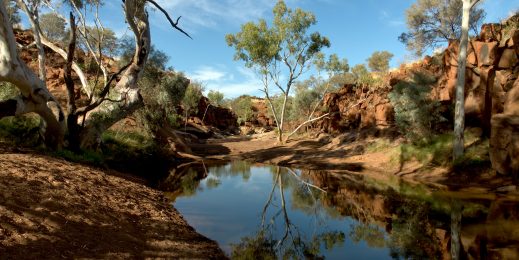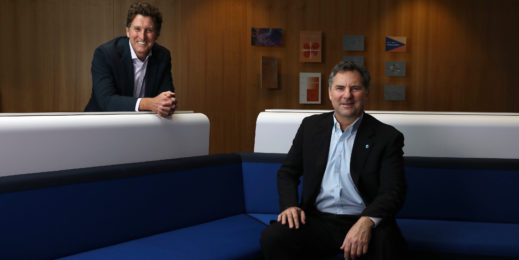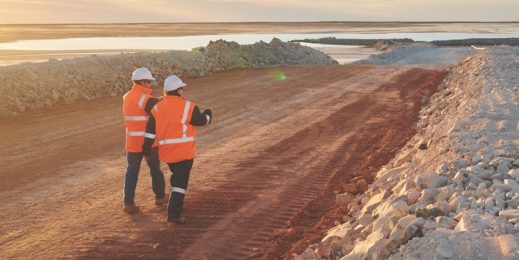
A conversation with NAB’s David Gall about Australia’s road to net zero
By Brett Shoemaker, Sustainability Director, Microsoft ANZ
Earlier today, Microsoft ANZ published a report on how large Australian organisations are tracking towards net zero, which revealed 34 per cent may not meet their 2050 targets.
It was a sobering finding, but it wasn’t the only message readers took away from the report. Within its pages, we also found stories about organisations leading Australia’s path to a low-carbon future and on track to meet their net zero commitments.
The leaders of some of these organisations will be joining me and Dr Chris Brauer, our report’s lead researcher, for the upcoming CEDA event Sustainability: Accelerating the journey to net zero, which you can register to attend here.
Ahead of the event, I’d like to share an edited transcript from my conversation with one of these leaders, David Gall. As Group Executive of Corporate and Institutional Banking at NAB, the nation’s largest provider of renewable energy financing, David and his team are at the forefront of Australia and New Zealand’s journey to net zero.
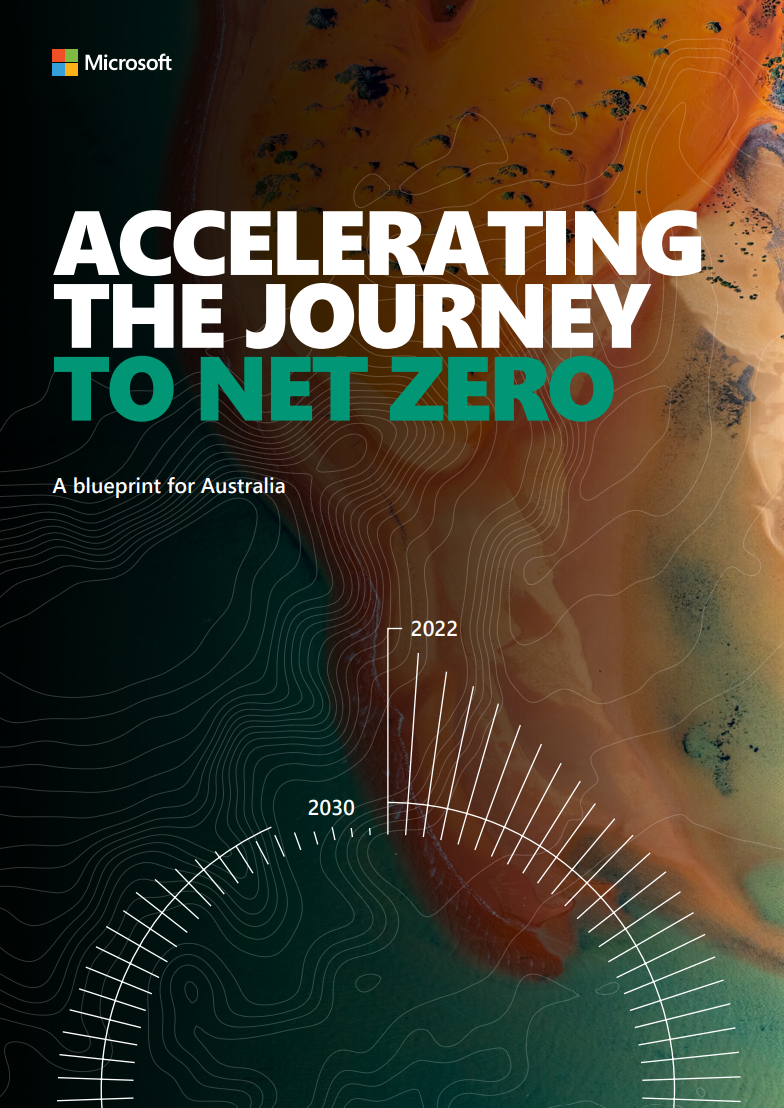
In my conversation with David, I asked him how NAB is progressing against its own targets, how it’s upskilling its employees on sustainability, and how it’s empowering its clients to turn the net zero transition into a win-win.
David, I know sustainability is a key part of everything NAB does: you’ve incorporated it into your strategic ambition and it helps to shape all of your business’s activities and collaborations. Why is climate action such a core focus for you?
I’ll start by saying that 100 per cent of our new graduates this year, across every business area, are interested in what NAB is doing about climate change. So, it’s clear sustainability issues, like climate change and the environment, matter greatly to our people, of which, there is around 32,000 of us.
It also matters to our customers. It matters to our stakeholders and the communities in which we operate. Australia’s financial institutions are big companies and leading by example is vitally important. By reducing our own emissions and minimising our impact, we can build real resilience in our business. Right now, we’re working towards cutting our own operational emissions by 51 per cent from 2019 levels by 2025. For the emissions we’ve yet to reduce, or been unable to avoid, we purchase and retire offsets to achieve carbon neutrality across our operations.
While reducing our operational emissions is important, we also know we drive significant impact through the financing we provide. By acting as a sounding board and helping our customers find innovative financing solutions, we’re able to encourage and help our clients find ways to transition.
We are also helping our clients reduce their own carbon emissions and better understand what it’s going to take to transition. And I’m proud to say many of our customers are already well advanced in their transition plans, towards achieving net zero. We’re actively working with 100 of our largest carbon emitters, understanding where they are currently, and supporting them as they develop or improve their plans to manage their transition to 2050.
You may have heard of things like sustainability-linked loans and sustainability-linked bonds, and if you haven’t, you will hear a lot more about them over the next few years. NAB’s been first to market with a lot of these financial innovations, that create real, tangible financial incentives for our clients to set sustainability goals that, without that incentive, they might not have gone for.
An additional role we play is around financing the innovations that are going to lead us to net zero. Because from all the studies that have been done, we know a lot of change needs to occur across society.
What we’re doing is partnering with our clients to help finance those business model transformations, new ideas, and growth opportunities, so they can develop the technologies that are going to support them to achieve their 2050 targets.
What are your thoughts on Australia’s current net zero targets?
It’s incredibly important to have targets that are measurable and transparent. It’s also vital that everyone signing up to those targets can be held accountable to them.
At NAB, we set targets early on, and they have really guided our journey. NAB announced that we had become carbon neutral back in 2010. The science and the measurement systems have moved on since then, and so have we. But we always knew we needed to start by getting our own house in order first.

One of our first steps early on was in financing renewable energy. We did our first renewable energy project back in 2003, and since then, we’ve done 150 more around the world, financing value of more than A$11.5 billion along the way. Renewables represent 71 per cent of our total lending to energy. We’re the largest provider of renewable energy finance in Australia, and one of the largest financiers to this sector in the world.
Our targets propelled us to take those steps, so setting those net zero goals is really important. I think what’s going to emerge over the next couple of years is the importance of interim targets as well. 2050 will be here in the blink of an eye, so it’s important that we are on the right trajectory now.
So, what is NAB doing to reduce its own emissions?
Pleasingly, in 2021, which is our most recent published information, we were able to see significant reductions in group operational emissions. We’re on track to achieve our 2025 goal and, while the impact of COVID-19 related restrictions means not all of the reductions achieved in 2021 will be permanent, the reality is we’re ahead of the target.
We have a long history of applying a reduction-focused approach to reducing our emissions. We avoid creating emissions in the first place and we’re switching to lower carbon energy sources. We’re also working towards being 100 per cent renewable energy by 2025.
That’s how we are approaching our operational emissions. In respect of our financed emissions, we are also aligning our lending portfolio to net-zero emissions by 2050. To this end we have joined the UN-convened Net Zero Banking Alliance, having been a founding signatory and the only Australian bank in the predecessor Collective Commitment to Climate Action since 2019.
As part of this, by the end this year we will have set 2030 interim decarbonisation targets for a substantial majority of our Australian lending portfolio including residential mortgages, agriculture, power generation, resources and transport.
So how do you monitor those emissions?
We track and measure our operational greenhouse gas emissions, which we not only look at internally but have independently assured and publish externally so we can be held to account as well.
I think what’s more challenging is understanding how to measure and mitigate the emissions resulting from the work we do with our clients.
The big area for financial institutions is to understand their Scope 3, indirect emissions: the emissions that our clients are producing which we finance.
It’s challenging but it has become better understood over the last few years, with a drive to more consistent, public reporting of emissions data across sectors. We’re putting measurement processes in place to get stronger insights on each of our lending portfolios. Whether it’s agriculture, transport, energy or mining, this helps us to understand aggregate emissions in each of those sectors and set sector-wide decarbonisation targets around what we expect to happen over the years through to 2050. Different sectors will need to decarbonise at different paces and so we have been clear that whenever we set a target we will use scenarios that are science-based and aligned to limit global warming to 1.5°.
It is quite a task. But it does show the pivotal role that banks are playing in the transition, because our clients’ emissions do count.
NAB is the largest agribusiness bank in Australia. How are you supporting clients in that sector to become more sustainable?
When I think about some of the aspects of climate transition that our farming clients are exploring, there’s a lot of investment in improving the resilience and productivity of the land. And that’s leading to better biodiversity outcomes as well, it’s a win–win. For starters, we’ve launched the NAB Agri Green Loan that’s supporting agribusiness customers to invest in activities that reduces their emissions and help them adapt to climate change.
But we’re also seeing farmers think more about how capturing and sequestering carbon can enable them to create carbon credits. Our clients need to have the right tools and measurement systems to do that. This could also allow them to create an additional revenue stream from their operations. So, they could potentially be getting a more productive farm, as well as a secondary source of income.
At the moment, we’re helps farmers have access to, and the ability to scale, by investing in technology that helps them better understand their soil carbon through satellite technology.
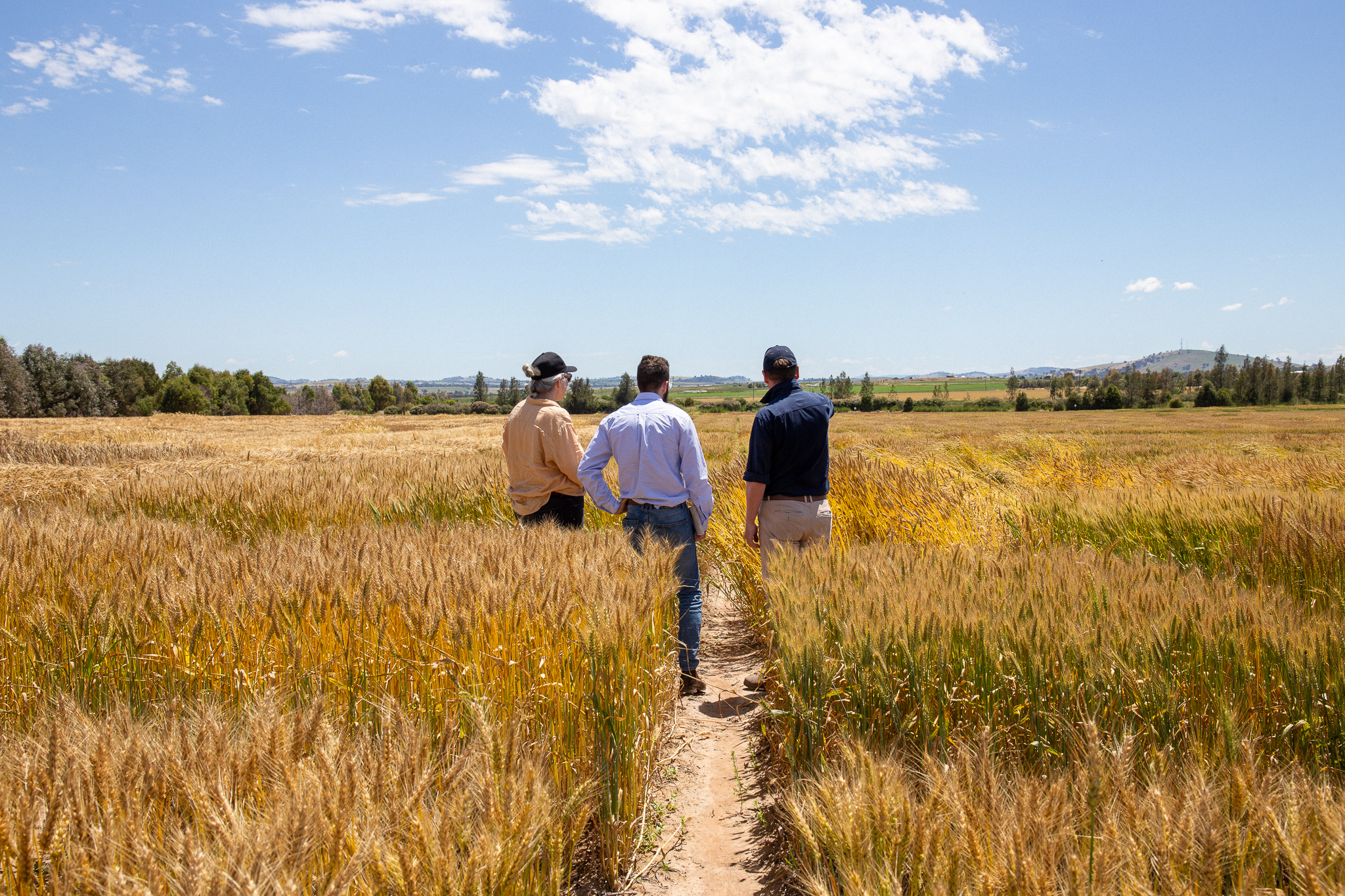
Distributed ledger technology is also being tested and used with some of our farming customers to measure soil carbon, meaning we can help reduce the cost of this process for them significantly. Obviously, these measurements can be done manually, but it’s got to be scalable and cost-effective at the end of the day. That’s where I think some of the digital technology, like distributed ledgers, are very important.
These solutions enable farmers to see the baseline and then measure change over time, so they can see in a very transparent way the amount of carbon that’s been captured. This can then be reported and used to create a carbon credit. So, technology is really important in terms of not only measuring what the farmer is doing, but in providing the inputs that are required to produce a carbon credit.
Reducing emissions is a global challenge but it’s also a global opportunity. I’m focused on showing clients how we can use some of Australia’s natural advantages to help the world transition.
You mentioned distributed ledgers. How important is technology in NAB’s transition and your clients’ transitions to lower-carbon ways of operating?
It’s very important. We are partnering with specialist technology providers on services that are critical to our ability to measure and monitor greenhouse gas emissions on an ongoing basis.
This has been a really big focus for us at NAB. We’ve been working with an alliance of global banks to develop the capability to scale what are called voluntary carbon markets, called Carbonplace.
Since we started, we’ve had several other banks join us in this consortium where we’ve established the early stages of a global market for carbon trading. It’s based on distributed ledger technology, which is the same technology that powers a lot of cryptocurrency. That’s exciting because it enables us to verify the carbon credit right from the farmer creating it, to the purchaser buying it.
So, the purchaser can make sure they’re buying a carbon credit that they can trace. And that allows them to verify its quality and efficacy and ensure it will be beyond reproach in the future.
When you look at reports like those from the International Energy Agency, they acknowledge that there’s still a lot of technology that needs to emerge over the next decade or so for us to achieve our 2050 targets.
So, is technology playing an important role today? Yes, absolutely. And it’s going to need to play an even larger and incredibly important role, in enabling further innovation for us as a globe to reach net zero.
So, it’s one thing to have the right technology. How are you then giving your employees the skills and capabilities to use this technology and support your clients on their sustainability journeys more broadly?
A few things here are very important. At NAB, we are making sure that all our people understand what our strategy is around sustainability, what our priorities are, what we’re doing and the progress we’re making.

That’s important at a head level – making sure we’re all working on the same things and have the same priorities. But it’s also important at a heart, or an emotional level. It enables a stronger connection to the purpose of our organisation, and we can make sure we’re all on the same journey together.
And you asked about skills, as well. We have a number of specialists within our business with very deep sustainability expertise. But what we are particularly focused on is building a much stronger capability, and a deeper understanding of the challenges and opportunities associated with climate change, throughout our broader banker team.
We’ve established a relationship with the Melbourne Business School to roll out programs in targeted classes of about 20 colleagues or so at a time, training our bankers on climate change.
This is helping lift the skills and capability of our people around sustainability and technology and building deep expertise. We know this is a complex topic, so it’s giving our bankers confidence knowing what questions to ask our clients and how we can best support them through their transition. We want the best climate bankers supporting these conversations with customers.
So, it’s not about using technology as a substitute; it’s about using technology and strong human capability together to deliver better strategies and support to our clients.
Finally, I’d like to ask about the business benefits NAB is seeing from its sustainability commitments? We talk a lot about the costs of transitioning, but what about the opportunities that are opening up?
Our future depends on acting now for the long term and this is creating opportunities.
By working with our clients and customers to encourage sustainable practices we’re seeing economic activities that create shared prosperity for current and future generations.
As our clients grow and succeed and take advantage of transition, we will need to be there to support them. So, the more we can support our clients succeed, the more success our environment, our communities, our economy and our business will have.
The reality is that the investment that our clients and we ourselves are going to need to make to get to 2050 net zero is enormous. It also creates a structuring opportunity because, for many of our clients, we are now also their sustainability coordinators, as well as their bankers.





